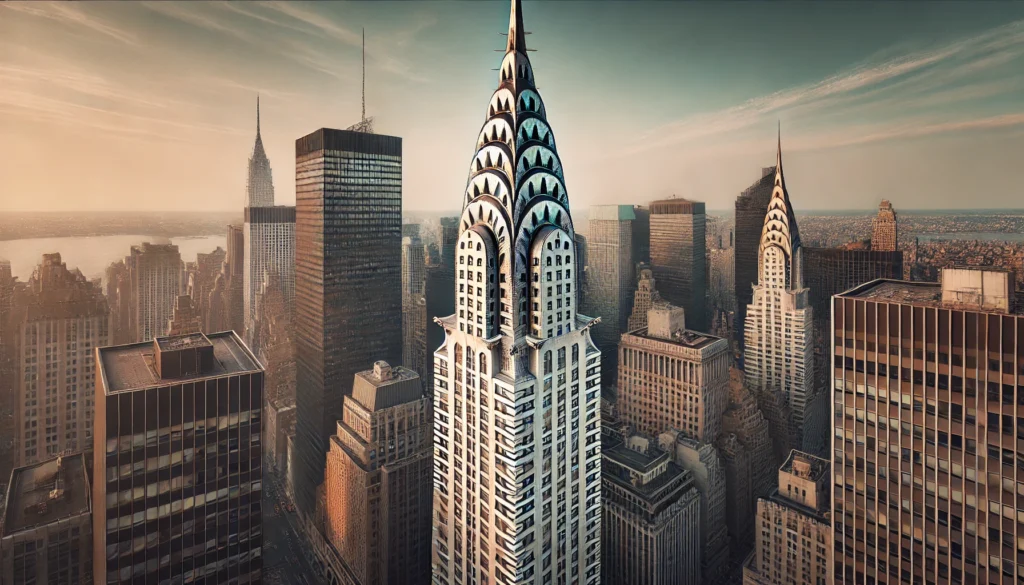Chrysler Building: Cooper Union Takes Control Amid Lease Dispute

New York City’s iconic Chrysler Building, known for its appearances in films like “Godzilla” and “Spider-Man,” has once again captured attention, but this time it’s due to a dispute over ownership.
The Cooper Union for the Advancement of Science and Art, which owns the land beneath the Chrysler Building, recently took control of the property after developer RFR Realty, responsible for the building’s ground lease, failed to pay $21 million in rent. The last payment was made in May. Despite efforts to renegotiate the lease, Cooper Union stated that RFR was unable to secure financing and ultimately defaulted on the lease agreement. In a letter sent to RFR on September 13, two weeks before the lease expiration, Cooper Union formally notified the developer of the lease termination. The school has since enlisted Cushman & Wakefield to manage the building, ensuring a smooth transition for its tenants.
The Wall Street Journal first reported Cooper Union’s decision to take over the property. The land under the Chrysler Building was originally transferred to Cooper Union by the family of the institution’s founder, Peter Cooper, in 1902. In 1978, the Chrysler Building was officially designated a New York City landmark.
In many cases, skyscrapers in New York City are owned by different entities, with one party holding the lease for the building itself while another owns the land beneath it. This arrangement can place added financial strain on the leaseholder, especially during periods of declining rental income.
RFR took over the ground lease for the Chrysler Building in 2019, in partnership with Australia’s Signal Holding. Signal Holding was later ordered to sell its stake as part of a bankruptcy proceeding. The partnership purchased the lease for $151 million, significantly less than the $720 million paid by a previous ownership group in 2008.
In response to the eviction notice, RFR has filed a lawsuit in New York State Supreme Court, calling Cooper Union’s actions “improper and fatally defective.” According to RFR, Cooper Union failed to serve a correct default notice and demanded an inaccurate amount in rent. RFR claims to have invested over $150 million in maintaining the building during the pandemic, citing the economic downturn and remote work trends as significant challenges. The company also argued that Cooper Union refused to engage in reasonable lease modifications, even though RFR offered to invest additional funds to modernize the building.
The dispute over the lease comes after Cooper Union raised the annual ground rent for the building from $20.1 million in 2018 to $32.5 million through 2027, with a planned increase to $41 million in 2028.
RFR’s legal team accused Cooper Union of sharing an “inaccurate and self-serving” narrative with the media, claiming the institution’s actions were an attempt to deflect from the ongoing lawsuit. RFR maintains that while it prefers a peaceful resolution, it is prepared to defend itself if necessary.
Despite its status as an architectural icon, the Chrysler Building has faced rising vacancy rates, with occupancy falling from 5.3% in 2014 to nearly 29% by the end of 2019. The pandemic further exacerbated the issue, with vacancy rates peaking at 38% in early 2022. However, current data shows the vacancy rate has since dropped to 14.3%, although it still lags behind other buildings in the Grand Central area.
The building’s tenants include flexible workspace provider IWG, law firm Moses Singer, and Creative Artists Agency, with many tenants occupying less than 10,000 square feet. While the building’s vacancy rate is slightly lower than the broader Grand Central market, it trails newer and refurbished properties, such as One Vanderbilt, which boasts a 0% vacancy rate.
Daniel Fishbein, a professor at NYU’s Schack Institute of Real Estate, noted that while the building’s small floor plans and columns may not appeal to all tenants, its historical significance and prime location near public transit offer potential for future growth. However, some maintenance work will be required to fully restore the property to modern standards.


